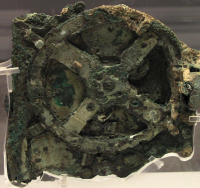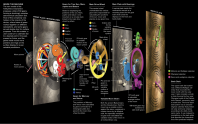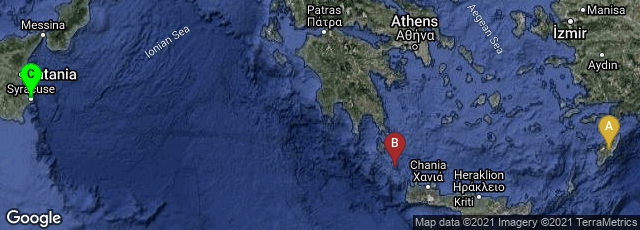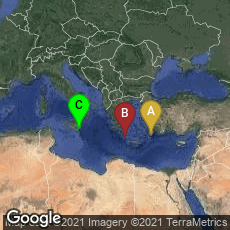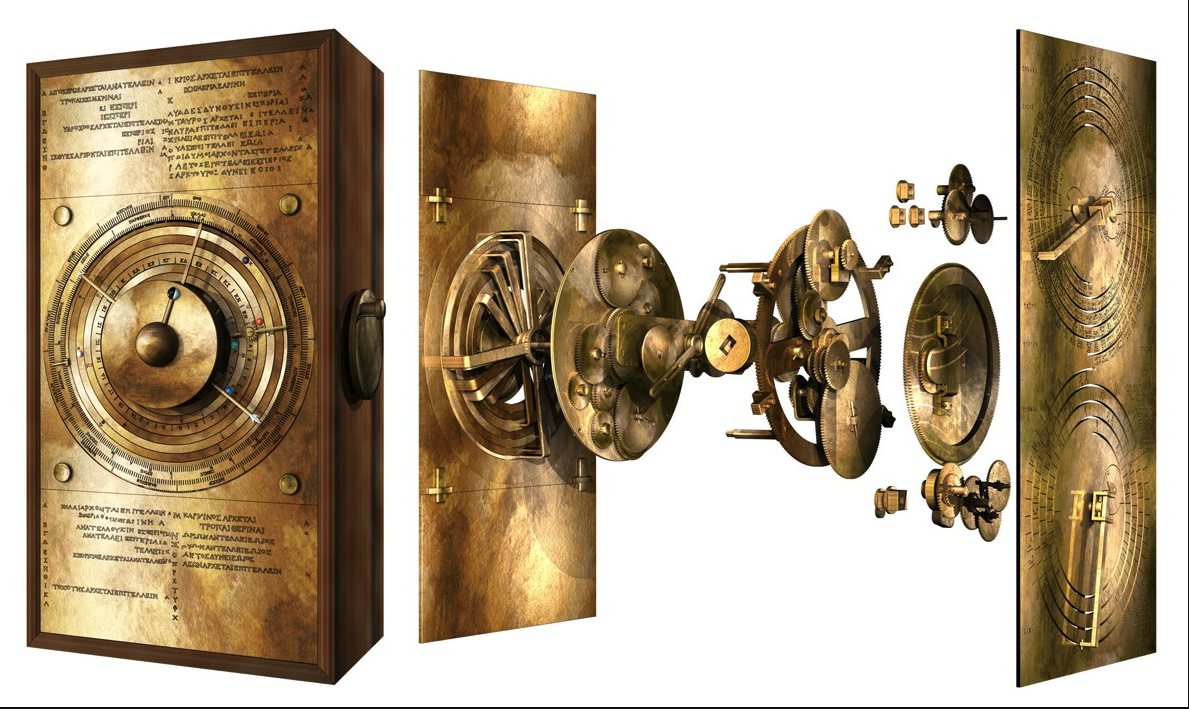The Antikythera Mechanism discovered off the island of Antikythera, Greece in 1900 or 1901, includes the only specimen preserved from antiquity of a scientifically graduated instrument. It may also be considered the earliest extant mechanical calculator. The device is displayed at the National Archaeological Museum of Athens, accompanied by a reconstruction made and donated to the museum by physicist and historian of science Derek de Solla Price.
"The Antikythera mechanism must therefore be an arithmetical counterpart of the much more familiar geometrical models of the solar system which were known to Plato and Archimedes and evolved into the orrery and the planetarium. The mechanism is like a great astronomical clock without an escapement, or like a modern analogue computer which uses mechanical parts to save tedious calculation . . . . It is certainly very similar to the great astronomical cathedral clocks that were built. . . ." in Europe beginning in the fourteenth century.
Applying high-resolution imaging systems and three-dimensional X-ray tomography, in 2008 experts deciphered inscriptions and reconstructed functions of the bronze gears on the mechanism. The results of this research, revealed details of dials on the instrument’s back side, including the names of all 12 months of an ancient calendar. Scientists found that the device not only predicted solar eclipses but also organized the calendar in the four-year cycles of the Olympiad, forerunner of the modern Olympic Games.
The new findings also suggested that the mechanism’s concept originated in the colonies of Corinth, possibly Syracuse, in Sicily. The scientists said this implied a likely connection with Archimedes, who lived in Syracuse and died in 212 BCE. It is known that Archimedes invented a planetarium which calculated motions of the moon and the known planets. It is also believed that Archimedes wrote a manuscript, which did not survive, on astronomical mechanisms. Some evidence had previously linked the complex device of gears and dials to the island of Rhodes and the astronomer Hipparchos, who had made a study of irregularities in the Moon’s orbital course.
In June 2016 an international team of archaeologists, astronomers and historians published the results of 10 years of researches on the mechanism in the first 2016 issue of the journal Almagest. Most significantly they were able to read texts preserved in the remains of the mechanisms by innovative imaging techniques.
"This special edition of the Almagest journal investigates the surviving text inscriptions on the Antikythera Mechanism. The structure of the mechanism and the history of the reading of the inscriptions are briefly reviewed. The methods used by the Antikythera Mechanism Research Project to image the inscriptions - computed tomography and polynomial textual mapping - are outlined. The layout of the inscriptions is described, and the dimensions of the mechanism deduced to allow the space available for inscriptions to be estimated. General conventions and notations are provided for the presentation of the inscriptions.
" Table of Contents
The Inscriptions of the Antikythera Mechanism
1. General Preface to the Publication of the InscriptionsAuthors: : M. Allen , W. Ambrisco , M. Anastasiouc, D. Bate , Y. Bitsakis, A. Crawleyf, M.G.Edmunds, , D. Gelb, R. Hadland, , P. Hockley, A. Jones, T. Malzbender, X. Moussas, A. Ramsey, J.H. Seiradakis, J. M. Steele, A.Tselikas, and M. Zafeiropoulou.
2. Historical Background and General Observations
Author: A. Jones
3. The Front Dial and Parapegma Inscriptions
Authors: Y. Bitsakis and A. Jones
4. The Back Dial and Back Plate Inscriptions
Authors: M. Anastasiou, Y. Bitsakis, A. Jones, J. M. Steele, and M. Zafeiropoulou
5. The Back Cover Inscription
Authors: Y. Bitsakis and A. Jones
6. The Front Cover Inscription
Authors: M. Anastasiou, Y. Bitsakis, A. Jones, X. Moussas, A.Tselikas, and M. Zafeiropoulou."
For an illustrated review of what was understood about the instrument as of April 2020 see Herbert Bruderer, "The Antikythera Mechanism," Communications of the ACM, 63 (2020) 108-115.
In March 2021 Tony Freeth, David Higgon, Aris Dacanalis, Lindsay MacDonald, Myrto Georgakopoulou & Adam Wojcik published in Nature, Scientific Reports 11, Article number 5821 (2021) a new reconstruction of the Antikythera Mechanism in a paper entitled "A Model of the Cosmos in the ancient Greek Antikythera Mechanism."
On January 1, 2022 Tony Freeth published an article in Scientific American entitled "An Ancient Greek Astronomical Calculation Machine Reveals New Secrets" describing refinements to the understanding of the design and function of the Antikthera mechanism.

